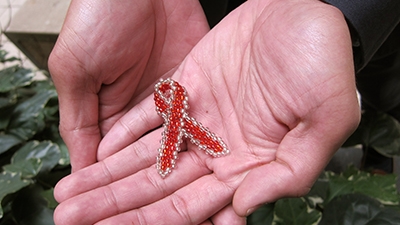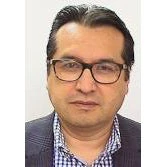
Key achievements and prospective issues
LAC concentrates only 2.3%of the total worldwide HIV/AIDS burden, landing in fourth place after Sub-Saharan Africa, South Asia, and East Asia and the Pacific. From 2000 to 2013, LAC had the second-highest decreasing rate on HIV/AIDS burden worldwide (42 %). At the end of 2015, roughly 1.6m people were living with HIV in a region with more than 500m people (discounting USA and Canada). The same year, Cuba became the first country in the world to receive validation from WHO for eliminating mother-to-child transmission of HIV and syphilis, with another five LAC countries close to achieving the same goal; this was one important step towards having an AIDS-free generation worldwide.
The early introduction of universal access to treatment initiated by Brazil and Argentina, massive social mobilization, new legal regulations, and efforts to control vertical transmission, stigma and discrimination converted the region in a leader in combating the HIV/AIDS epidemic.
HIV program expenditure in LAC, annually is around three billion USD. While substantial, it is under 1% of LAC’s total health expenditure. In the context of less external financing support in future and the need to improve efficiencies, LAC decided to undertake a series of 12 studies within eight countries.
The results of the studies are relevant:
First, the lower regional burden shows differences.
In 2013, 75% of people with HIV living in LAC were from four countries: Brazil, Colombia, Mexico, and Venezuela. However, Haiti had the highest regional concentration of HIV/AIDS with 3,509 DALYs per 100,000 people, and alone accounted for 17.4% of the total HIV/AIDS regional burden. Canada is the best performer in America for its early reaction with universal treatment, followed by Argentina and Brazil. On the other extreme, Suriname and Belize have 297% more DALYs per 100,000 people than the regional average.
Although HIV prevalence in LAC is relatively low, the numbers affected are substantial. Brazil with an HIV prevalence of 0.4% equates to 730,000 people living with HIV. Vertical transmission is a large problem for many countries. Honduras, for example, estimates one in five HIV-positive infants are born to HIV-infected mothers, since less than 5% of HIV-positive pregnant women receive treatment.
Second: The region needs to consider improving efficiency.
Technical efficiency is key. HIV testing coverage is very limited for LAC. It is estimated that at least 35% of people living with HIV do not know their HIV status. Late HIV diagnosis in the region remains a concern, with Argentina being one of the few countries that run regular surveys for improving technical efficiency.
Across LAC, a bit more than three-quarters of those diagnosed receive treatment - the highest percentage for a low- and middle-income region. However, the change in WHO's 2013 treatment guidelines (CD4), meant that antiretroviral therapy (ART) coverage fell to 45% (2013). While ten countries adopted the same criterion, Brazil and Panama elected to offer treatment regardless of CD4 count.
Treatment coverage varies greatly by country –seven countries have 80% or more coverage of ART and in the other extreme five countries are under 50% from the 33 countries evaluated. The rest are in between. The region converted universal treatment as a regional goal.
Attaining allocative efficiency is key. OPTIMA, a mathematical modelling tool used in four LAC countries, showed that HIV program could be maintained, and expanded, while simultaneously improving efficiency. The analysis highlighted the average HIV/AIDS cost per DALY in some countries was US$1,061, where treatment and care represent 75% of total spending. In Chile, Argentina and two other countries, this number was three times higher than the regional average.
With regards to prevention, the analysis showed, on average, for every 100 USD spent on treatment less than two USD are spent on prevention. Since a high portion of HIV spending is allocated to treatment, there are opportunities for reducing per patient costs while increasing ART coverage.
Sustainability is another key challenge. Illustratively in Argentina, it is estimated that HIV/AIDS treatment cost to 2020 will increase by 83.3%, and in consequence, efficiency needs to be improved.
Eliminating homophobia and transphobia. Even where treatment is readily available, barriers, such as homophobia and transphobia, prevent groups from accessing the services they need. While in Argentina, findings on studies performed showed lower homophobia every year, in Bolivia “perceived homophobia” was a fundamental limitation, even when neither homophobia nor discrimination was detected in personnel of health services (Santa Cruz survey). In Belize, the study showed homophobia and discrimination detected in personnel from health services.
Men who have sex with men (MSM) are the group most affected by HIV in LAC. Only 51% of MSM are thought to access HIV services, a level which has remained largely unchanged for several years. Transgender women are also highly affected. HIV prevalence among this group is thought to be 49 times higher than among the general population (2012). Some LAC countries have taken steps to address the problem, for example, Argentina regularly measures discrimination on services. Peru, Colombia, Brazil and Mexico have launched new actions plans to raise awareness among health providers, and some countries in LAC are advancing with antidiscrimination laws and legislation on gender identity and sexual orientation. Argentina, Brazil and Uruguay are the leaders in this area.
Third: Cost-benefit analysis.
LAC has shown significant commitment in investing resources in HIV programs. In 2015, admirably 86% of HIV spending came from domestic sources. Only eight of 33 countries analyzed in the region had National financing levels under 50%, while one, Haiti is still heavily dependent on international funding with more than 90% required.
Long-term access to treatment is dependent on lower antiretroviral drug pricing. The region could save an estimated of 30% on first- and second-line treatment if countries moved from current price structures to recommended ones, and purchasing - in some cases - from the regional PAHO strategic fund.
The future of HIV/AIDS in Latin America and the Caribbean
LAC has made significant progress in tackling its HIV epidemic. The World Bank has contributed in part to this positive change over the years. Cost-benefit studies conducted on the region have highlighted that LAC has averted almost eight million DALYs and about 160,000 lives of premature death between 2000 and 2013. The region is moving in the right direction. Further gains can be achieved by ensuring efficiency is a key part of the LAC’s HIV programs.


Join the Conversation